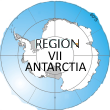WMO Region VII (Antarctica mainland & adjoining islands): Highest Temperature
| Record Value | 17.5°C (53.5°F) |
|---|---|
| 18.3Date of Record | 6/2 (February) /2020 |
| Length of Record | 1953-present |
| Instrumentation | Maximum and minimum thermometers in Stevenson Screen |
| Geospatial Location | Esperanza Research Station (Argentina) [63°24'S, 56°59'W, elevation: 24m (78.7ft)] |
References
WMO Evaluation of Two Extreme High Temperatures Occurring in February 2020 for the Antarctic Peninsula Region. Márcio Rocha Francelino, Carlos Schaefer, Maria de Los Milagros Skansi, Steve Cowell, John King, Matthew A. Lazzara, Randall S. Cerveny, Susan Solomon, Phil Jones, David Bromwich, James Renwick, Bulletin of the American Meteorological Society, https://journals.ametsoc.org/doi/10.1175/BAMS-D-21-0040.1
Discussion
GENEVA, 1 July 2021 (WMO) - The World Meteorological Organization (WMO) has recognized a new record high temperature for the Antarctic continent of 18.3° Celsius on 6 February 2020 at the Esperanza station (Argentina). However, it rejected an even higher temperature, of 20.75°C, which was reported on 9 February 2020 at an automated permafrost monitoring station (Brazil) on Seymour Island.
The previous record for the Antarctic region (continental, including mainland and surrounding islands] was 17.5°C (63.5°F) recorded on 24 March 2015 at Esperanza Research Station. The record for the Antarctic region (all ice/land south of 60 degrees latitude) is 19.8C, taken on Signy Island in January 1982.
“Verification of this maximum temperature record is important because it helps us to build up a picture of the weather and climate in one of Earth’s final frontiers. Even more so than the Arctic, The Antarctic, is poorly covered in terms of continuous and sustained weather and climate observations and forecasts, even though both play an important role in driving climate and ocean patterns and in sea level rise,” said WMO Secretary-General Prof. Petteri Taalas.
“The Antarctic Peninsula (the northwest tip near to South America) is among the fastest warming regions of the planet, almost 3°C over the last 50 years. This new temperature record is therefore consistent with the climate change we are observing. WMO is working in partnership with the Antarctic Treaty System to help conserve this pristine continent," said Prof. Taalas.
A committee for WMO’s Weather and Climate Extremes Archive conducted an extensive review of the weather situation on the Antarctic peninsula at the time of the reported records. It determined that a large high-pressure system over the area created föhn conditions (downslope winds producing significant surface warming) and resulted in local warming at both Esperanza Station and Seymour Island. Past evaluations have demonstrated that such meteorological conditions are conducive for producing record temperature scenarios.
The committee also examined the two observations’ instrumental setups. The examination of the data and metadata of the Esperanza station observation, operated by Argentina’s national meteorological service (Servicio Meteorológico Nacional, SMN) revealed no major concerns.
However, a detailed analysis of data and metadata of the Seymour Island permafrost monitoring station operated by a Brazilian polar science research team indicated that an improvised radiation shield led to a demonstrable thermal bias error for the temperature sensor.
The WMO investigation committee emphasizes the permafrost monitoring station was not badly designed for its purpose, but the project investigators were forced to improvise a non-optimal radiation shield after losing the original set. While this modification did not cause a problem with regard to the project’s specific goals involving recording permafrost variations, the thermal bias in air temperature created by the nonstandard radiation shield does invalidate the temperature observation with regard to being an official WMO weather observation.
The WMO international evaluation committee consisted of polar science and climate experts from Argentina, Brazil, New Zealand, Spain, the United Kingdom and the United States.
The new record will now be added to the WMO Archive of Weather and Climate Extremes, which includes the world’s highest and lowest temperatures, rainfall, heaviest hailstone, longest dry period, maximum gust of wind, longest lightning flash and weather-related mortalities.
Full details of the assessment are given in the on-line issue of the Bulletin of the American Meteorological Society published on 1 July 2021.

WMO Region VII (Antarctica)